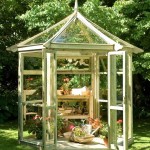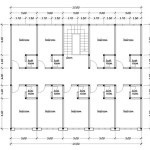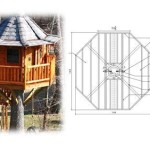Example of House Extension Plans
Expanding living space is a common desire among homeowners. Whether driven by a growing family, the need for a home office, or simply the desire for more comfortable living, house extensions offer a valuable solution. Planning such a project, however, requires careful consideration of various factors, including budget, local regulations, and the desired functionality of the added space.
This article explores examples of house extension plans, highlighting key aspects to consider during the planning phase. Understanding these examples provides a starting point for homeowners embarking on their own extension journeys.
Rear Extension: Single-Story Kitchen Extension
One of the most popular extension types is the single-story rear extension. This often involves extending the kitchen outwards, creating a larger, more functional space for cooking, dining, and socializing. Key features often include:
* Large glazed doors and windows to maximize natural light. * An open-plan layout connecting to the existing living area. * A kitchen island for additional workspace and casual dining. * Roof lanterns or skylights to brighten the interior. * Underfloor heating for comfortable temperature control.Side Return Extension: Maximizing Narrow Spaces
In urban areas where properties often have narrow side alleys, a side return extension can effectively utilize this otherwise wasted space. This type of extension is ideal for:
* Creating a galley kitchen with added workspace and storage. * Adding a downstairs bathroom or utility room. * Improving the flow and connectivity of the ground floor. * Introducing a lightwell to bring natural light into the extended area.Wrap-Around Extension: Combining Rear and Side Extensions
For those seeking a significant increase in living space, a wrap-around extension, combining rear and side extensions, offers a comprehensive solution. This type of extension can accommodate:
* A large open-plan kitchen-diner-living area. * A separate utility room or downstairs cloakroom. * A study or playroom. * Improved access to the garden. * Significant potential to increase property value.Second-Story Extension: Expanding Upwards
When lateral space is limited, a second-story extension provides a viable alternative. This type of extension can create:
* Additional bedrooms with en-suite bathrooms. * A home office or study space. * A second living area or family room. * Improved views from the upper level. * Requires careful consideration of structural integrity and roof design.Basement Extension: Utilizing Underground Space
For properties with suitable foundations, a basement extension can unlock valuable space beneath the existing house. This type of extension is often used for:
* Creating a home cinema or entertainment room. * Adding a gym or fitness area. * Creating additional bedrooms or guest suites. * Providing storage space. * Requires extensive excavation and waterproofing.Garage Conversion: Repurposing Existing Structures
Converting an existing garage into usable living space is a cost-effective alternative to building a new extension. This type of conversion can create:
* A home office or study. * A playroom or additional bedroom. * A utility room or workshop. * Requires consideration of insulation, ventilation, and planning permission.Loft Conversion: Maximizing Attic Space
Similar to basement extensions, loft conversions capitalize on existing, often underutilized space. A loft conversion can provide:
* Additional bedrooms with en-suite bathrooms. * A home office or study. * A hobby room or storage space. * Requires careful consideration of roof structure, insulation, and access.Planning Considerations for House Extensions
Regardless of the type of extension, several key considerations are crucial during the planning phase:
*Budget:
Establishing a realistic budget is essential. *Planning Permission:
Check local regulations and obtain necessary permits. *Building Regulations:
Ensure compliance with building codes and safety standards. *Design and Functionality:
Consider the desired use and layout of the extended space. *Structural Integrity:
Ensure the existing structure can support the added weight and size. *Natural Light:
Maximize natural light through windows, rooflights, and glazed doors. *Ventilation:
Adequate ventilation is essential for a healthy indoor environment. *Insulation:
Proper insulation ensures energy efficiency and comfortable temperatures. *Access:
Consider access to the extension for both construction and everyday use.By carefully considering these factors and exploring the various examples of house extension plans, homeowners can make informed decisions that transform their living spaces to meet their evolving needs and enhance their quality of life.

Sample Extension Or Property Drawings Ltd Architectural

Extension Plans House Extensions

Examples

Example Drawings Ep Architecture Redditch And Bromsgrove

Examples

Sample Extension Or Property Drawings Ltd Architectural

Sample Extension Or Property Drawings Ltd Architectural

Extension Plans Drawings Designs

Here S An Example Of A Proposed Drawing Planning Permission Plan Rear Extension

Extension Plans Drawings Designs








